as the title suggests I had a driver's rear door top hinge fail last week. At first the door wouldn't open past 1/3 open then, upon trying to open it wider gave a dull thud and lost all detent function and wouldn't stay open. After investigating the possibility of a new hinge from Citroen (£57) and a laughable £90 labour to colour match spray and fit, I decide to have a look at a home repair before parting with any cash.
I did some surfing and I found a Russian site where someone had had creaking problem with one of their hinges and, in a rough translation, had described how he had removed the bottom cover with a piece of wood and a hammer. I tried this and it came off very easily. At this point I noticed that:-
1, there was a broken piece of spring roll pin in the cover and that...
2. it was full of water!!
Taking the hinge off was simply a matter of removing 3 x 13mm AF bolts, one into the rear door and 2 into the 'B' pillar and sliding the whole assembly out.
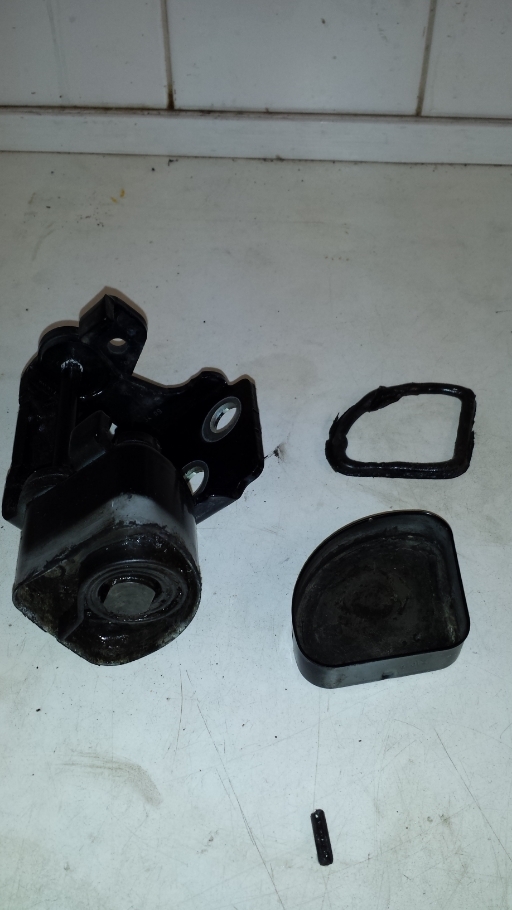
Once on the bench I could see that the bottom spring plate was riveted in position in three places. I decided to drill these out using a centre drill which proved to be a bad decision as because the holes were slightly off centre it affected the way I decided to repair it...However I digress....
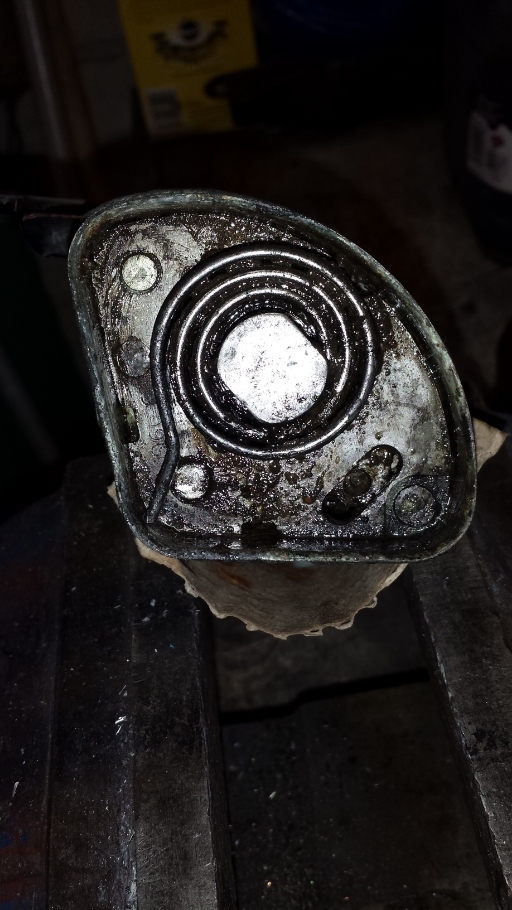
Hold the hinge upside down in a machine vice, carefully centre pop the riveted over portion and, using a pillar drill, remove the material from where the pillars under the plate are peened over.
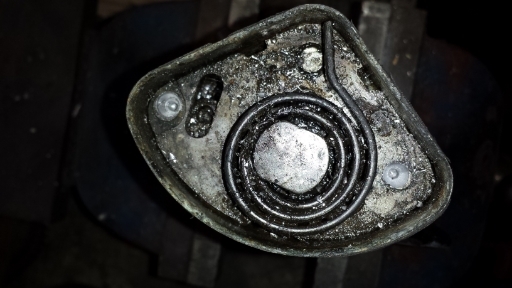
Once drilled out the bottom spring plate came away to reveal the detent plate and carriage, with the remains of the broken spring roll pin still in place. This is when it becomes obvious how the hinge/detent works. The hinge pivot has a pinion with a captive roller which runs along the detent plate which, in turn is held against the roller by spring pressure from the spring on the bottom plate which bears against the roll pin. The roll pin protrudes out of both top and bottom of the carriage, a small amount at the top running in a slot and a larger amount at the bottom so the spring has a large surface to bear against.
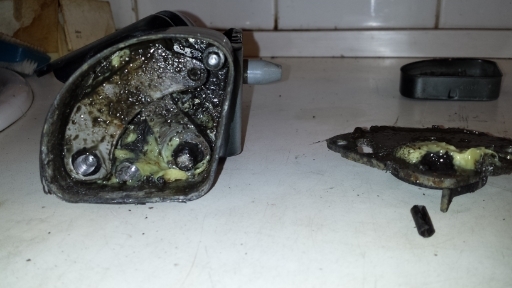
To get this mechanism out as a whole, the hinge plates (not the bottom 'can' as it will distort) need to be place on a hard surface (i.e. an open vice) and the hinge pivot driven out from the top carefully so that the roller plate/pivot, carriage, detent plate and plastic tubular spacer all come out as a unit.
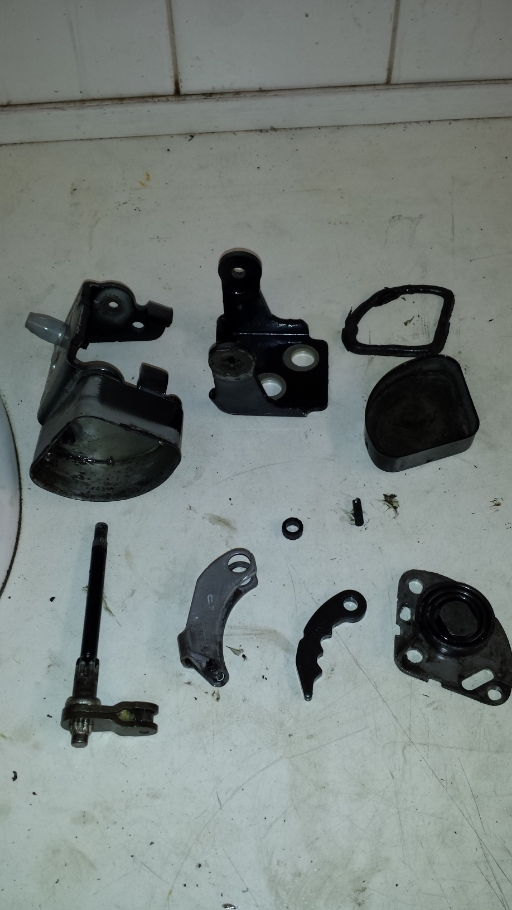
Once out clean up all the parts and inspect for other damage/distortion and rectify as necessary. Note how in the following picture the carriage is distorted and how far the roll pin protrudes out which goes into the upper part of teh hinge body groove.
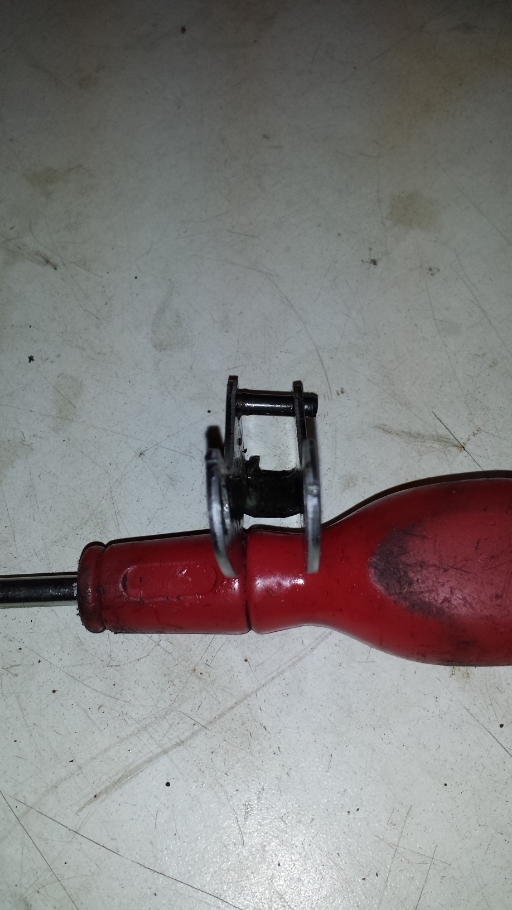
Fit new 4.8 x 32mm spring roll pin/Mills pin/Sellok pin (£0.99p off ebay) into carriage and assemble carriage onto spindle to get correct position in groove.
Using a dremel or similar, grind the pillars level. Centre pop them again and drill them to a depth of 10-15mm with a 4.2mm diameter drill (tapping size for 5mm). Carefully tap them out to 5mm (as I found that, when I needed to exert the force necessary, the pillar opposite the detent spindle started to turn as the opposing riveted over part lost grip and I had to hold it with a pair of pipe grips while tapping). This is where I realised that centre drilling the pillars was not a good move as, because I had drilled them off-centre, I couldn't drill and tap one of them out without destroying the pillar. I did try using some metal filler but it didn't work so I just left it and hoped that the two pillars would be enough support. Centre popping and using a 6mm drill to remove the peening is a far better option...
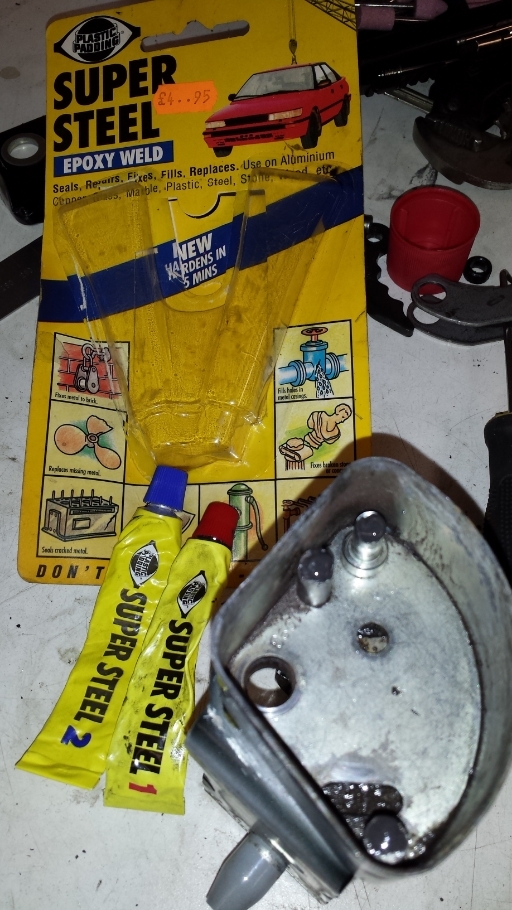
Once tapped out, clean all debris from area (I used my parts washer and compressed air) and reassemble the detent mechanism (put detent plate in carriage, then spacer on top of plate, put roller against detent plate and slide in spindle/mechanism into body), remembering to put the moving hinge plate in first. Line up the hinge parts with the spindle (i.e. closed) and drive the spindle back into the splines in both hinge plate (It will be obvious!).
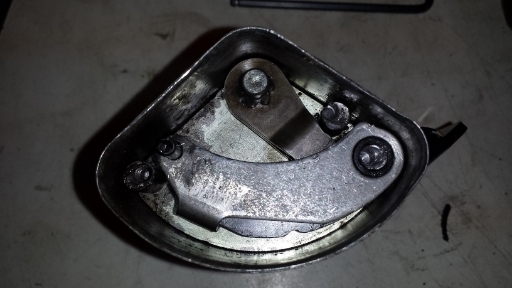
Fully grease mechanism and replace top plate, securing with suitable length 5mm cap head screws and washers (the one in the middle may have to be fitted when the spring has been tensioned due to space.
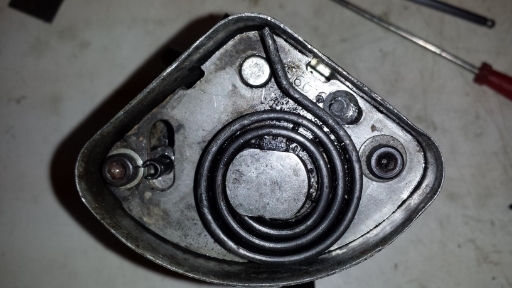
Hold the spring tail with a pair of stout pliers, pull against the tension and lift over roll pin to tension spring.
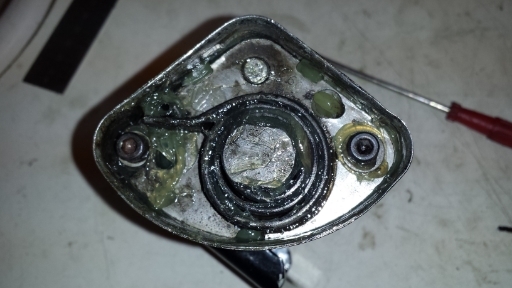
Refit seal and bottom cover (I drilled a couple of drain holes in mine while I had the 4.2mm tapping drill in the chuck) and refit mended hinge to car. once bolted back into place, open door and check detent is working...
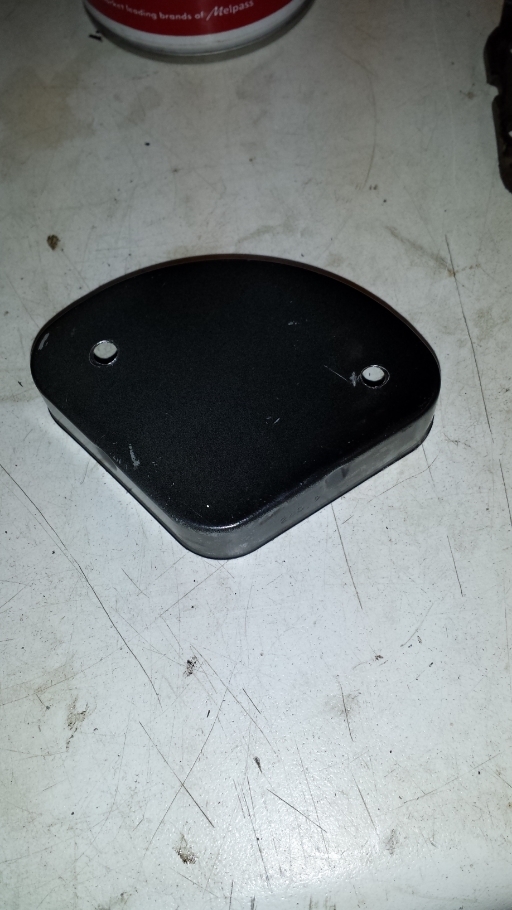
Praise oneself on a job well done and retire for a well earned cuppa...
Notes:-
It may have just been a one off as I haven't heard of any similar failures but I think in my case what happened was this:- On the morning of the failure the outside temperature was -4c. Because the cover plate was holding in a lot of water I think that this water had frozen and was holding the roll pin in place. By opening the door the detent and carriage moved but the pin didn't causing it to fracture and release the spring pressure hence no detent effect,
The hinge will definitely need a respray when you have completed the repair but I felt that was a minor thing as opposed to the cost of replacement from the dealers...
Talking of which, the LHF and LHR hinges are 9035W9 and the RHF and RHR are 9035X0 (mine being the RHR.) - CItroen.Service = £47.25 each + VAT = £56.70...
The rear door hinges can be taken off by leaving the rear door shut and removing the bolts after opening the front doors, the front door hinges may need a bit more ingenuity as (according to a PDF download of the Citroen workshop manual page from another Russian site, Citroen use a cradle to hold the (open) front door level and secure before removing the door hinge...
HTH
Glyn
